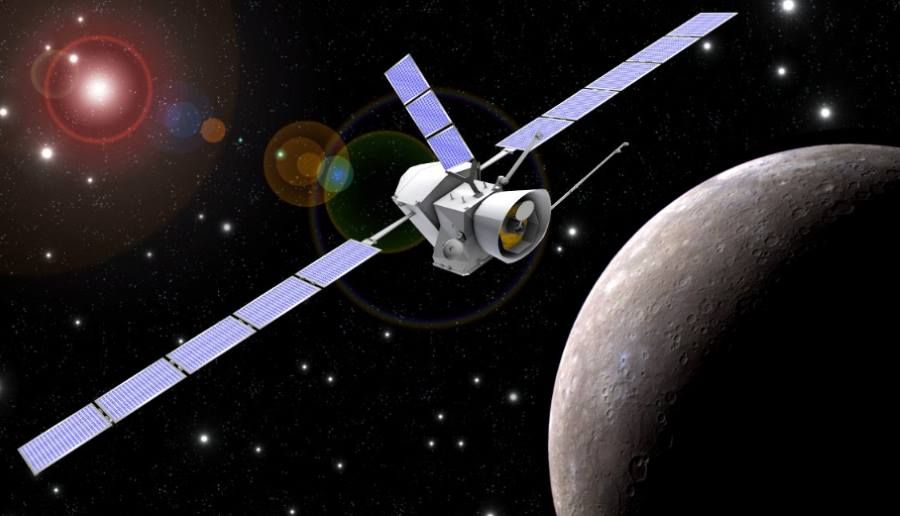
BepiColombo – the mission to Mercury got the green light
The mission to Mercury carried out jointly by ESA and JAXA has undergone a systems review in recent days and is ready to be transported to the launch site. The launch is likely to take place in early October.
– It has been a long and bumpy road. There is still a lot of work to be done, but we are extremely pleased that we can finally move our preparations to the launch sites. Roin parallel, we are continuing several long-term testow engineoin transfer, under near-space conditions, to best prepare for our subrove to Mercury – Ulrich Reininghaus, BepiColombo project manager at ESA, said.
Scientists acknowledged that they need about six months on site, i.e. at the spaceport in French Guiana, to thoroughly prepare the launch. The work includes m.in. Preparation of protective insulation for the probe and dwoch orbiterow, fixing solar panels, sunshields and connecting the three elements of theoin the mission into one.
Podro¿ to Mercury is expected to take more than seven years. BepiColombo will have a rather complicated flight path. Using several gravity assists, it will enter Mercury’s orbit in late 2025. Its flight includes a close flyby near Earth, two close flybys near Venus and six flybysoin the vicinity of Mercury before eventually entering its orbit.
The mission was originally scheduled to launch in July 2014. However, due to opoof delays related to technical issues and subsequent ones related to the selection of an appropriate flight trajectory, the launch of BepiColombo was postponed several times.
The BepiColombo probe consists of a head moduleoThe probe is to be used to study Mercury’s magnetosphereoch orbiterow. The first of the orbiterow – Mercury Planetary Orbiter (MPO) – is to study the planet. It is built on behalf of ESA and contains 11 instrumentow science. Second – Mercury Magnetospheric Orbiter (MMO) – is to be used to study the magnetosphere of Mercury. It was built by an engineerowith JAXA. Main moduleoThe main module of the so-called. transfer module – Mercury Transfer Module (MTM), for which itory is the responsibility of the ESA, is the basic part of the ship to which theoR to which both orbiters will be attached for the duration of the flight. Due to budget constraints, the lander was abandoned, whichory were to be built by the Russians.
The mission is designed to study the structure, topography and geology of Mercury. Investigates row also the dynamics and composition of the exosphere. The mission will analyze the roalso the structure and dynamics of Mercury’s magnetic field.
Mercury is the smallest and closest planet to our star in the solar system. The planet is virtually devoid of an atmosphere and its surface with numerous impact craters resembles our Moon. The temperature on the surface of Mercury oscillates between -183 st. Celsius a 427 st. Celsius. The planet has no natural satellitesow. It has been known since ancient times and can be seen with the naked eye, but due to its proximity to the Sun, Mercury can only be seen from Earth just before sunrise or just after sunset.
Mercury has so far only been visited by two Earth probes. Therefore, in cfown comparison to other planets in the solar system, we know relatively little about this planet. It was first studied by the Mariner 10 probe, ktora made between 1974 and 1975 maps 45 percent of the. surface of the planet. The next encounter with Mercury did not occur until 2008. The MESSENGER probe has mapped more white spots on the planet’s surface during three close approaches, resulting in a 98 percent. whole.


